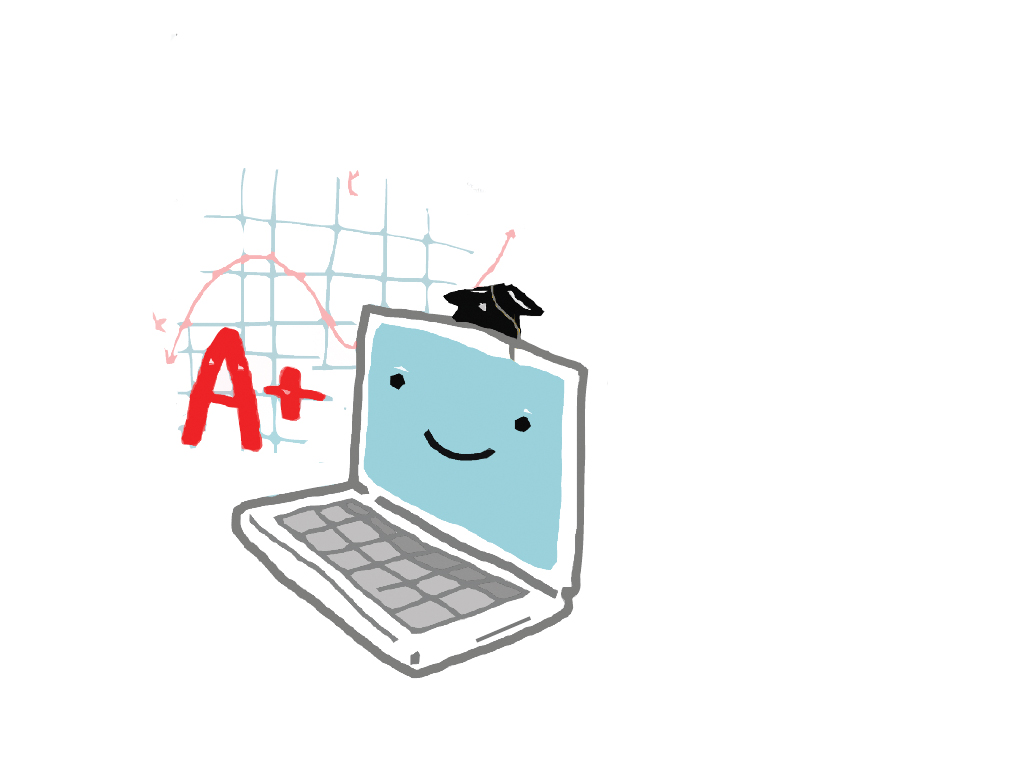When it comes to technology and academia, the debate over online classes has recently predominated. But what if we look at this issue from a different angle and take a step back into the classroom?
Aside from a digitized classroom, there are current technologies available that are capable of being integrated into the traditional classroom setting, and they are largely being ignored.
To put it into perspective, we’ve come a long way. A 2001 study from the University of South Alabama and Pennsylvania State University bemoaned technological deficiency in higher education. Ten years later, technological advances have become ubiquitous. However, substantial improvements on campus have yet to appear.
At this stage, the crux of the issue is that professors are not always able to properly utilize the equipment available to them. The Office of Instructional Development has voluntary classes for professors who want to learn more about classroom technology, from Podcasts to PowerPoints.
But the classes are inadequately attended and should be required.
It is generally assumed that a simple PowerPoint, the most commonly used classroom technology, can be a welcome supplement to a lecture ““ but in some situations, slide shows can be inconsequential or potentially distracting.
The truth is, the integration of technology into the classroom could greatly improve with something as simple as professors embellishing their PowerPoints. Projection screens are the bare bones of classroom technology, yet even those technologies aren’t being used for anything beyond bullet points, or perhaps a loosely placed YouTube video.
Russell Schuh, a linguistics professor, has familiarized himself with movie editing and graphic designing programs to make his classes more interactive. Schuh said he likes to think of his class as a movie in which he has a role, and so he intersperses videos, graphics and songs into his PowerPoints.
Additionally, there is more sophisticated technology being used in courses or developed specifically for the classroom ““ and UCLA should capitalize on this trend.
An initial step was taken when all fourth-year nursing students were given iPod touches so they could access applications that assist in studying with nursing board exams. In addition, a group of UCLA students in the geography department used an Android app to map trees in an effort to improve the environment.
In a recent special edition about the classroom going digital, the Chronicle of Higher Education explored the educational uses of Twitter feeds channeled through students’ own phones and computers. These are the kinds of resources UCLA should be looking to utilize because they offer superior teaching methods along with low capital investment.
Evidence of technology’s rightful position in the classroom is undeniable. Numerous studies have shown that dual coding visual images with auditory explanations induce better mental recall. Furthermore, a study at the University of British Columbia affirmed the intuitive notion that more interactive classes engage the mind and supplement the learning process.
Professors ought to be introduced to and made fully aware of new technologies. The Office of Instructional Development’s voluntary technology classes need to be marketed more effectively to faculty. Otherwise, the university should make it a requirement that professors enroll in them.
Perhaps UCLA could even work with professors who specialize in technology to lead workshops for their colleagues.
The world is changing fundamentally with the advent of new technology, and if the university remains reluctant to pursue these improvements, it will only act to hurt the educational process.
Educating professors is only the first step toward integrating technology into the classroom on a larger scale. Once individual professors are able to gauge the utility of different technologies, the university as a whole can begin to think about adopting new digital tools.
Do classes need to be more tech-savvy? Email Bardelmeier at wbardelmeier@media.ucla.edu. Send general comments to opinion@media.ucla.edu.
